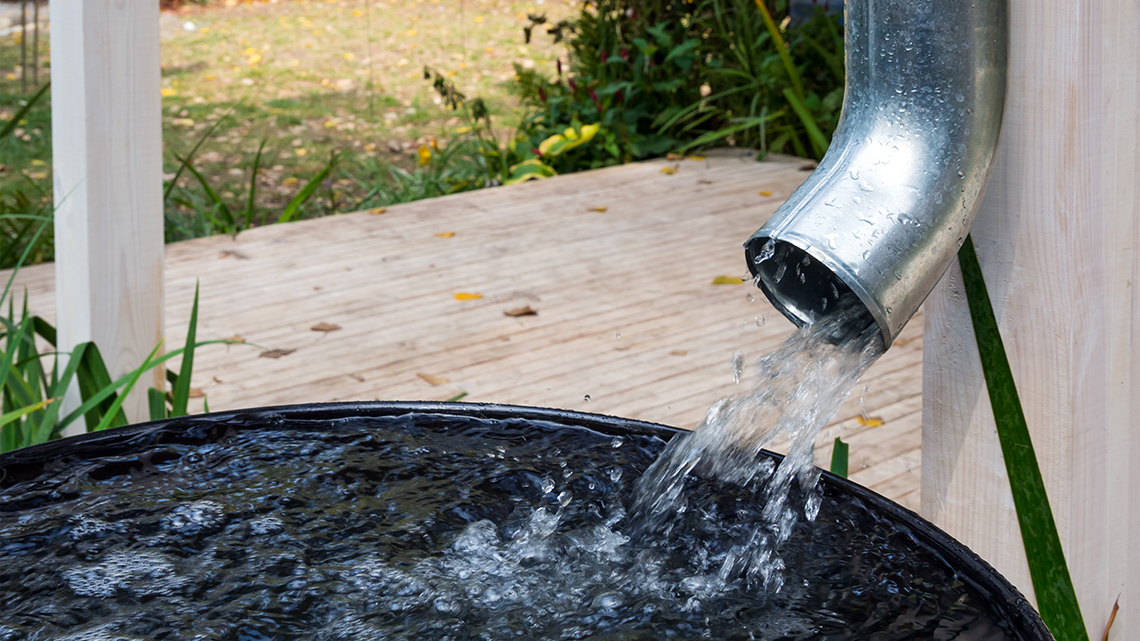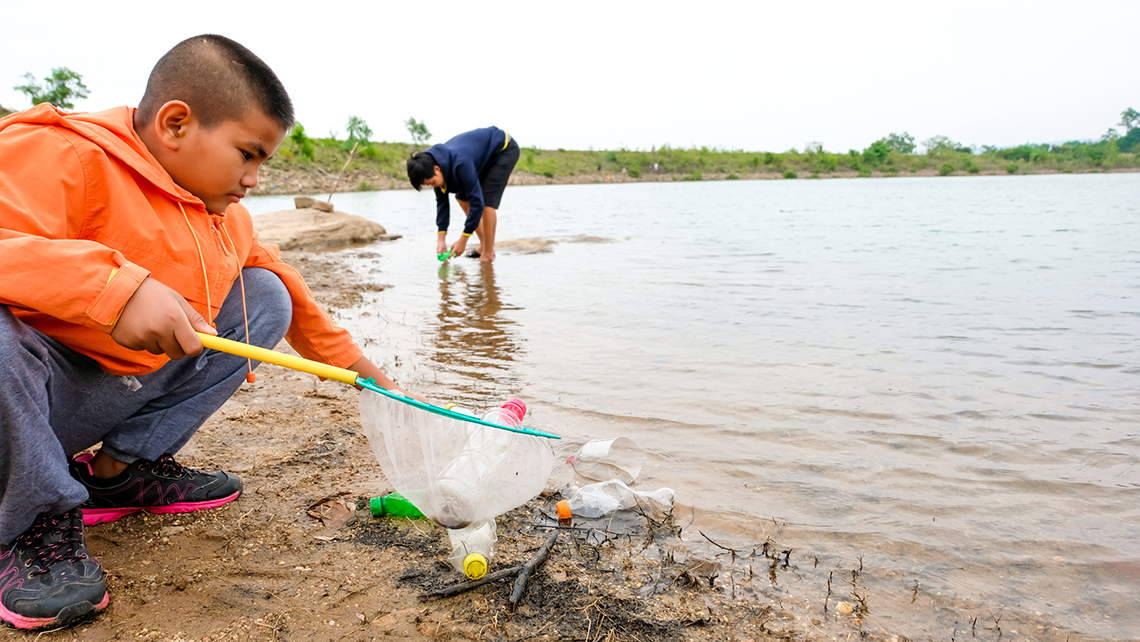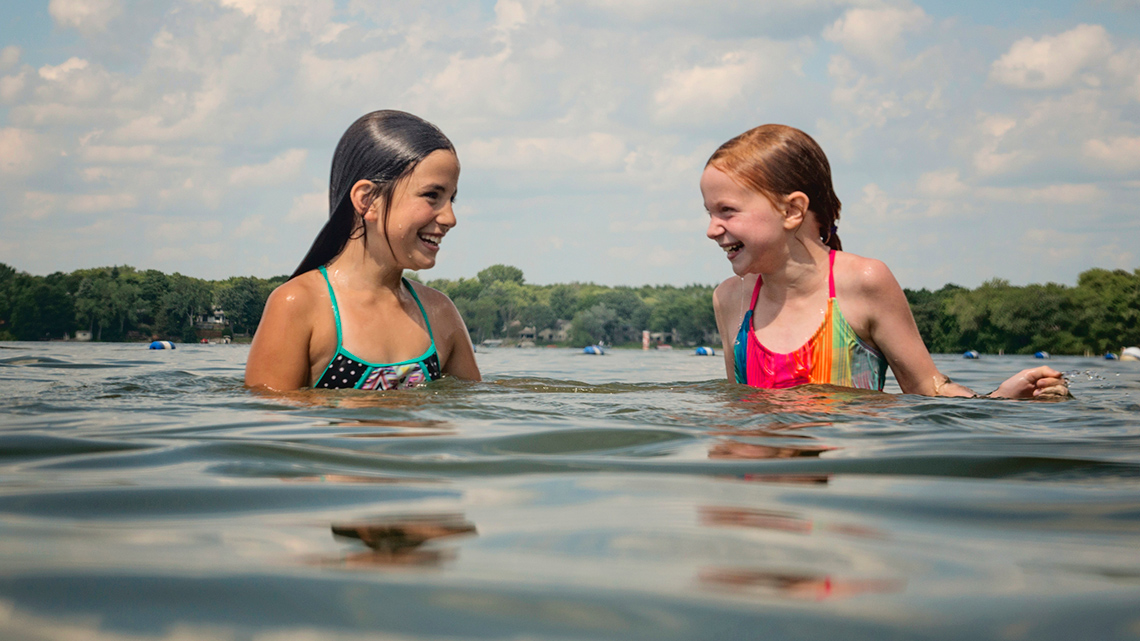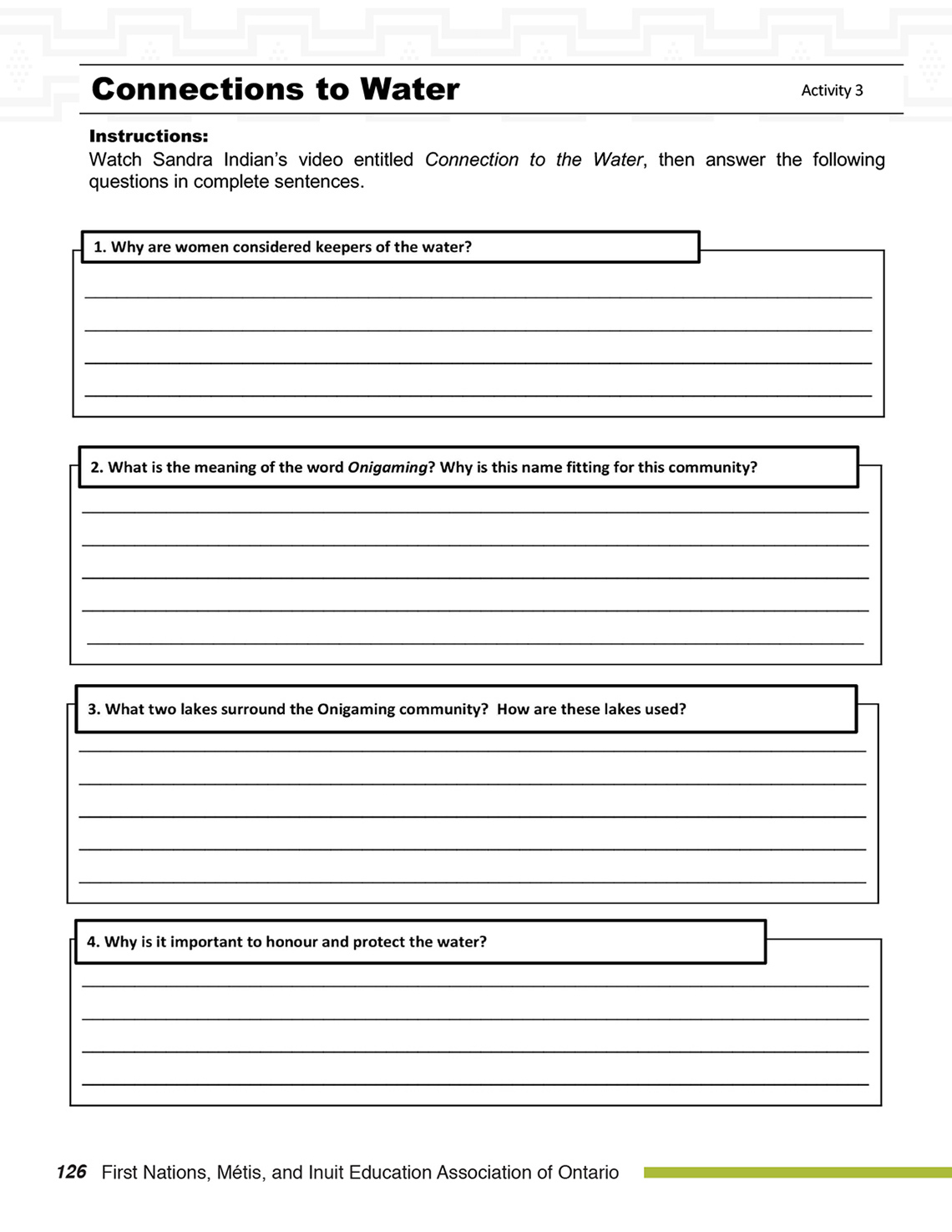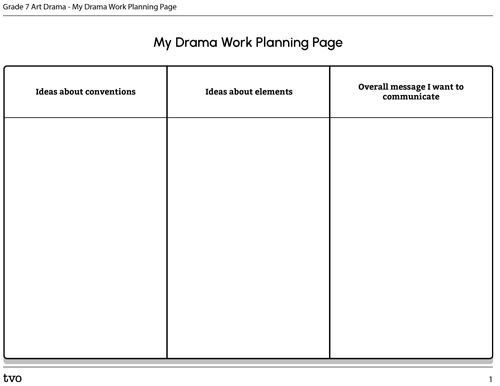Minds On
Warm up

Let’s begin with a deep breathing activity.
Don’t forget to do your safety check!
Warm Up
Breathing activity
 Take a deep breath in, counting silently to 5 as you do so.
Take a deep breath in, counting silently to 5 as you do so.
Hold your breath for 5 seconds.
Slowly exhale your breath, counting silently to 5 as you do so.
Now count to 5 before taking another breath.
Repeat this activity 5 times.
Access the following audio recording “Breathing Activity” to follow this exercise.
Breathing Activity
Drama game
Explore the following video of water. As you explore, come up with five words, using the senses to guide you. Record your words using a method of your choice.
When you are finished, read out the words. How do they make you feel?
Let’s get started
Explore the following images and descriptions around water. As you are exploring, consider the following questions:
- Which examples do you connect with?
- Which would you like to know more about?
After exploring, record your responses to these questions using a method of your choice.
- What is your relationship with water?
- Why is water important?
Action
Get ready, get set…
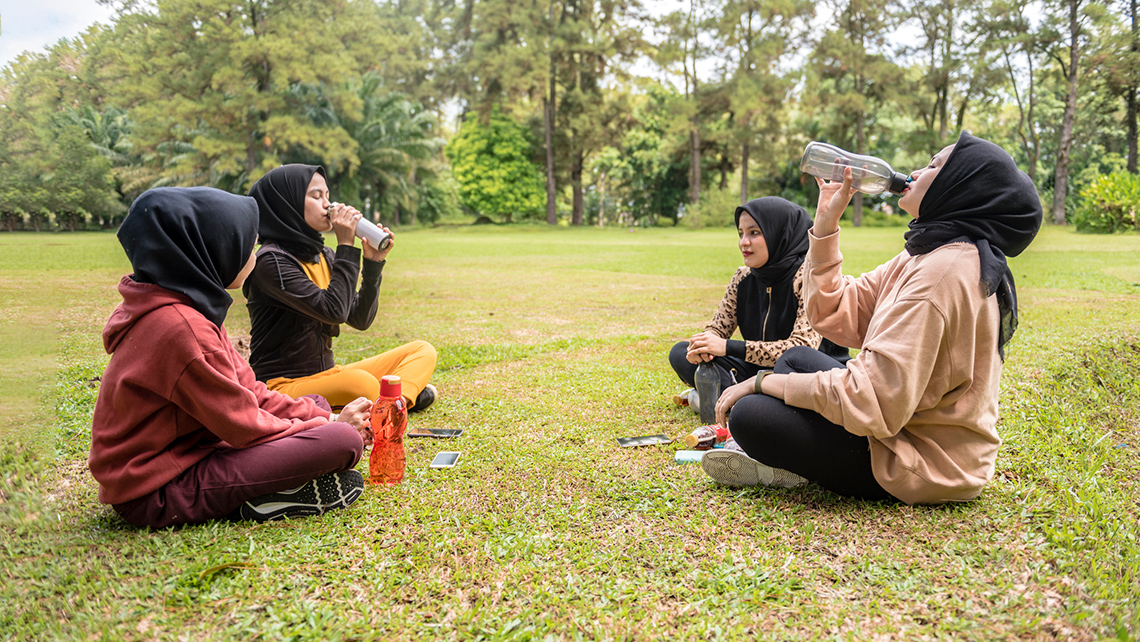
Think about the following questions. Record your ideas using a method of your choice.
- How is water a part of your daily life?
- Do you think that everyone has the same relationship to water? Why or why not?
Press ‘Let’s Check’ to access a possible response.
How is water a part of your daily life?
I use running water to shower, wash my hands, brush my teeth, and the clean dishes. I have access to proper sanitation. In the summer, I enjoy swimming in the lake.
Do you think that everyone has the same relationship to water? Why or why not?
Some communities have very strong relationships to water, some people do not have access to clean water, and some people do not have running water in their home or community.
Indigenous communities and connection with water
Let’s explore two Nations in Ontario that share their strong connection to water.
Kitchenuhmaykoosib Inninuwug First Nation
Indigenous communities across Canada have a strong relationship with water. Though each community is distinct, most if not all Indigenous worldviews believe that the waters have a spirit and are living things. Kitchenuhmaykoosib Inninuwug First Nation is one of these communities.
Kitchenuhmaykoosib Inninuwug First Nation is a reserve that is also called Big Trout Lake, Ontario.
As we work towards Truth and Reconciliation, information about lands and territories is constantly being updated. This map was created using information available as of March 2022 from Google Maps.

Map of Kitchenuhmaykoosib Inninuwug First Nation reserve
The community of Kitchenuhmaykoosib Inninuwug has a population of just over 1000 people (in 2016). Ojibwa/Cree and English are the languages that are spoken and written in this community.
In the following video, members of the Kitchenuhmaykoosib Innunuwug First Nation and Chief Morris share the physical environment surrounding the reserve. They share information about the KI flag , the meaning behind the symbols found on the flag, and discuss what it means to be “people of the land.”
Choose three of the questions related to information in the video to respond to using the following Kitchenuhmaykoosib Inninuwug: Where We Live fillable and printable document. You can also use another method of your choice to record your responses.
Consider adding your work to your drama portfolio.
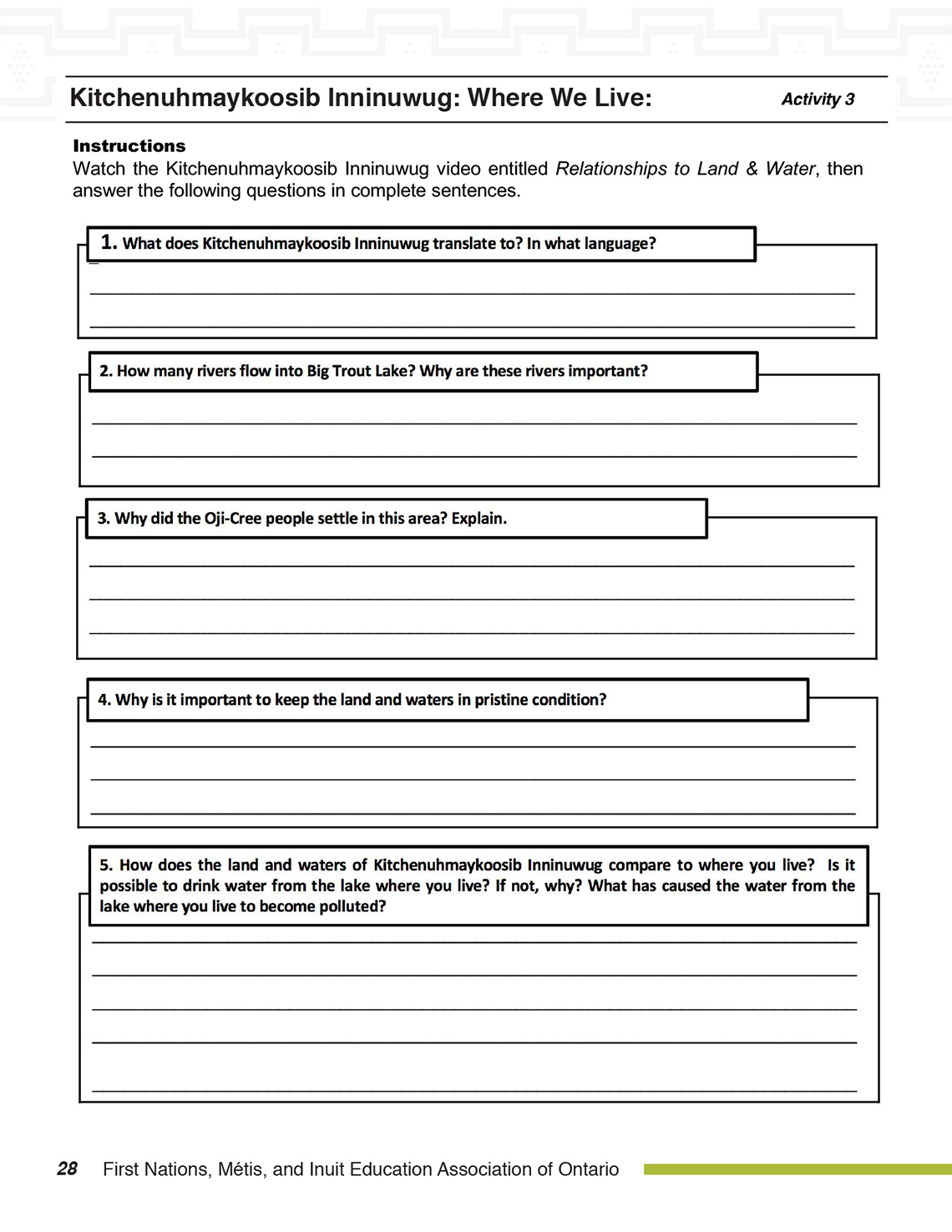
Press the Activity button to access Kitchenuhmaykoosib Inninuwug: Where We Live.
Activity (Open PDF in a new tab)Ojibway’s of Onigaming First Nation
Indigenous communities across Canada have a strong relationship with water. Though each community is distinct, most if not all Indigenous worldviews believe that the waters have a spirit and are living things. Ojibway’s of Onigaming First Nation is one of these communities.
The community of Ojibway’s of Onigaming First Nation is located in the Kenora District of Ontario, near Nestor Falls.
As we work towards Truth and Reconciliation, information about lands and territories is constantly being updated. This map was created using information available as of March 2022 from Google Maps.

Map of Ojibways of Onigaming First Nation
The community of Ojibways of Onigaming First Nation has a population of just under 1000 people (in 2012). Ojibwa/Cree and English are the languages that are spoken and written in this community.
In the following video, Sandra Indian, a member of the Ojibways of Onigaming First Nation, discusses the importance of water and the relationship and responsibilities their Nation has with water.
Choose two of the questions related to information in the video to respond to using the following Connections To Water fillable and printable document. You can also use another method of your choice to record your responses.
Consider adding your work to your drama portfolio.
Press ‘Let’s Check’ to access possible answers.
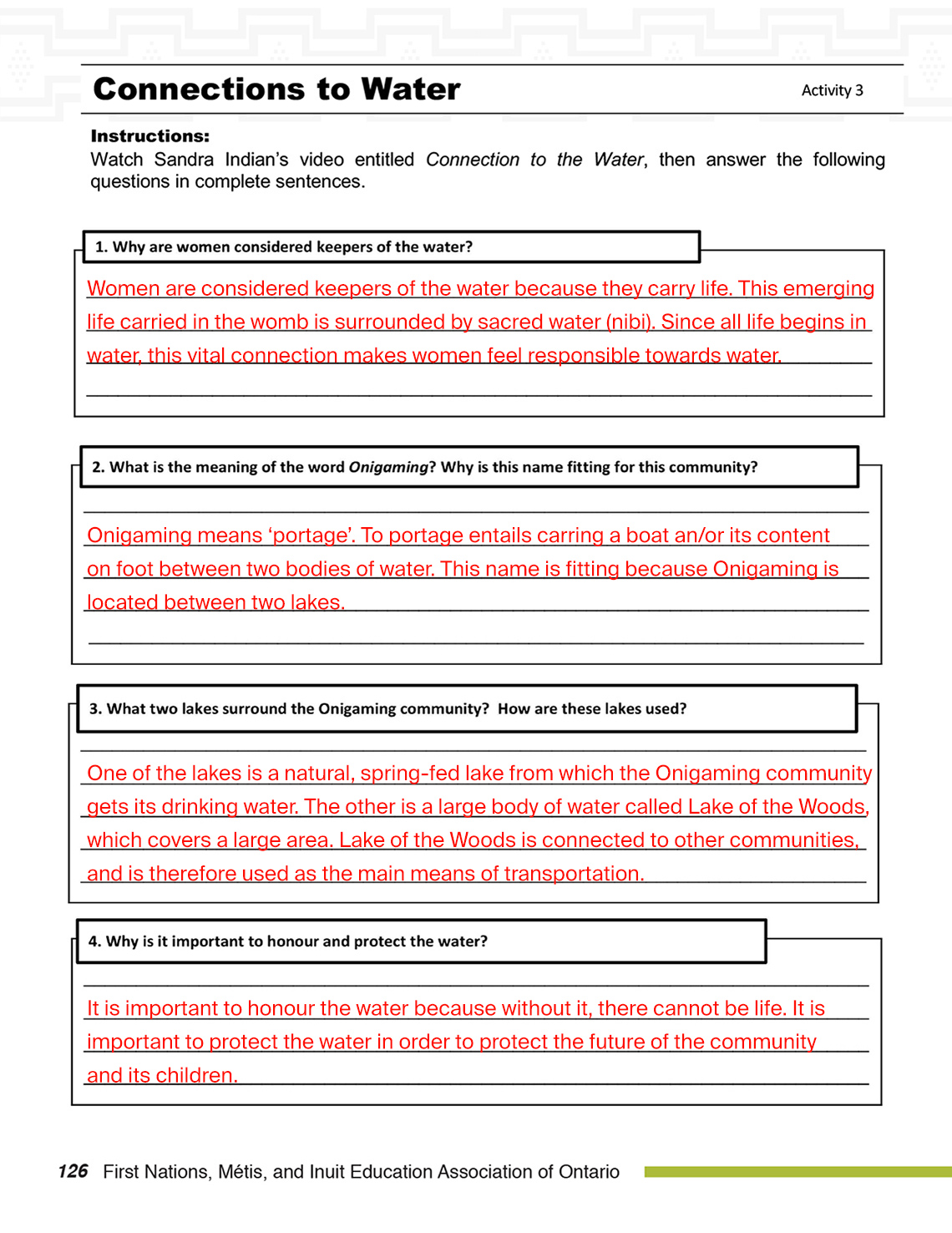
The following are the answers to the worksheet titled “Connections to Water” The answer to question one is “Women are considered keepers of the water because they carry life. This emerging life carried in the womb is surrounded by sacred water (nibi). Since all life begins in water, this vital connection makes women feel responsible towards water”. The answer to question two is Onigaming means ‘portage’. To portage entails carrying a boat and/or its content on foot between two bodies of water. This name is fitting because Onigaming is located between two lakes”. The answer to question three is “One of the lakes is a natural, spring-fed lake from which the Onigaming community gets its drinking water. The other is a large body of water called Lake of the Woods, which covers a large area. Lake of the Woods is connected to other communities and is therefore used as the main means of transportation”. The answer to question four is “It is important to honour the water because without it, there cannot be life. It is important to protect the water in order to protect the future of the community and its children”.
How does drama relate to our connection with water?
Drama is used to express personal opinions, to share understandings, and to build empathy.
Considering the Indigenous perspectives you have explored, what have you learned about the role and importance of water in Indigenous culture?
- Why is it important that we learn from the practices and teachings of Indigenous communities?
- How can these teachings inform our own understanding and help us create a connection to with water?
Revisit the questions.
What is your own relationship with water? How might you represent and honour water in your own way?
Go!
Imagine a body of water. It could be a river, stream, waterfall, or the middle of the ocean.
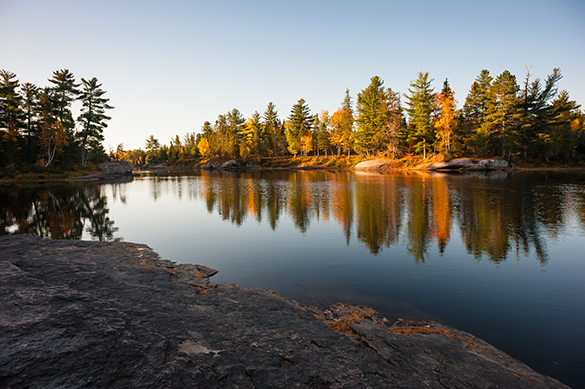
- What is the weather like by the body of water? Is the sky clear, is it windy?
- How does the weather affect the body of water? Is the water still and smooth or are there big waves forming?
- Is the water rushing fast, or moving slowly? What might the water sound like?
How can you represent the movement of water with your body, gestures, or sounds?
Press ‘Hint’ to reveal some clues to help you get started.
How can your body move?
What sounds might you experience?
What gestures might you be making to represent the water?
You can also create a description of how the water might move, sound, or feel.
Creating drama about water
How can we create a drama work that reflects the importance of water and our connection to water?
Use your response to these questions as your guide:
- What is your own relationship with water?
- How might you represent and honour water in your own way?
Let’s consider….
If water is our setting, and we are the characters, how could we share the story of our relationship with water?
Step 1:
You will need to consider which convention of drama would most effectively share your ideas to an audience.
Press the following tabs to explore the different conventions.
Tableau is a group of silent, motionless figures used to represent a scene, theme, or abstract idea (e.g., peace, joy), or an important moment in a narrative. Tableaux may be presented as stand-alone images to communicate one specific message or may be used to achieve particular effects in a longer drama work. Important features of a tableau include character, space, gesture, facial expressions, and levels.
Explore this video entitled “What is a Tableau?” to learn about the four different features of a tableau. The four features are stillness, facial expressions, filling the space, and levels.
Mime is the use of gesture, movement, and facial expression without words or sounds to communicate actions, character, relationships, or emotion.
Explore the following video of an example of a mime performance. Consider how the performer creates their character by using exaggerated movements, gestures, facial expressions and props.
A monologue is a long speech by one character in a drama, intended to provide insight into the character.
Explore this video entitled “What is a Monologue” to learn more about how actors use monologue to communicate their ideas and emotions to the audience.
Narration is a convention in which a speaker describes the action that is occurring in a drama. Instead of creating dialogue, a playwright could decide to tell the story through the use of narration.
Explore this example narration audio clip for “The Wasps, the Bees and the Hornet.”
The Wasps, the Bees and the Hornet
Visual aids are pictures, projections, or objects used to enhance drama performances.
A prop is a portable object used in a drama to support the action or to give authenticity to the setting.
Explore this video entitled “Props” to learn more about how actors use props to get into character.
A soundscape or sound collage is a combination of sounds used to create an atmosphere or to enhance important moments of a scene using voice and/or instruments.
Musical accompaniment includes musical scores (compositions) or songs are added to a production to also create an atmosphere.
Using artificial sounds artistically in performance is referred to as sound effects.
Explore the following video entitled “The Magic of Making Sound” to explore how sound effects are made.
Brainstorm
Brainstorm
Which convention of drama do you feel would effectively share your message about water? Are you considering using more than one?
Complete the My Drama Work Planning Page in your notebook or using the following fillable and printable document. You can also use another method of your choice to record your ideas.
Consider adding this to your drama portfolio.
Step 2:
CONSIDER: What is your overall message you want to communicate from your responses to these questions?
What is your own relationship with water? How might you represent and honour water in your own way
Return to your planning tool or the planning tool provided to record ideas about your message.
Press ‘Example’ to access a possible response.
Clean water is so important to a community. I want to educate people about what happens if our human garbage ends up in the waters, putting toxins into the water.
Step 3:
Now that you have made a decision about the convention you will use, it is time to consider how you will include the elements of drama into your personal work.
Water is the setting, and we are the characters. How can you use these elements to communicate your relationship to water?
As you explore the elements and find the ones that you would like to include, consider the questions to guide your planning.
Press the following tabs to access the different types of elements.

Analysing the background, motivation, speech, and actions of characters to build roles; using voice, stance, gesture, and facial expression to portray character
- How will you communicate the motivation of the actions and speech of your characters with respect to their relationship to water?
- How would the character(s) behave around water? Would they speak to the water or to the audience about the water?

Analysing relationships to develop the interplay between characters
- How will you communicate a relationship between the character(s) and the water in a way that an audience will understand? Will it be in how they interact with the water? Are they gentle? Are they respectful?

Using props, costumes, and furniture to establish setting; modifying production elpents to suit different audiences
- The water is the setting. Will you use a visual of the water in your drama work? A video?
- Can you use materials to represent the water?

Using various stage effects to produce specific audience reactions
- Can you use sound effects to communicate the sound of water to the audience? Can you use music to represent the sound of water in motion?
- Can you use a projection to communicate to the audience?

Using a wide range of devices to highlight the central theme for the audience; making deliberate artistic choices to sharpen focus
- How can you keep the focus of the audience on your relationship to water?
- How is the placement of an audience important to where your character(s) will be?
Return to your planning tool or the planning tool provided to record your ideas and plans for how to effectively communicate your relationship to water.
Consolidation
Putting it all together

You have planned for your drama work focusing on your relationship to water and how you can honour water. Reflecting on this planning piece, how did you use the following to guide your message?
- Your overall message – how did having an overall message help you plan your drama work?
- The conventions of drama – how did you choose your convention? How did this help shape your drama work?
- The elements of drama – how did you use the elements of drama to shape your drama work? Which elements did you use?
Planning one more step
Imagine you were going to perform your drama work for an audience.
- Where would you want this to be performed? Why? Will it be inside or outside? In a theatre?
- Who would you want your audience to be? Why?
Portfolio
Journal reflection
Reflect on the learning tasks. This reflection is a space for you to express your feelings, ask questions about what you have just done, and connect thoughts together with specific activities or exercises.
Use 3 of the journal prompts from the Reflection Starters list and create a written, audio, or video reflection.
|
Prompts to Start a Reflection on Drama Class Note: The following prompts begin an entire thought and can be used to develop your thoughts and ideas. Note: Try to utilize three of the prompts provided. If there is something else you wish to share, continue to build on your ideas. Note: Explore your thoughts and feelings with direct reference to what you learned and explored within the lesson. When I did ____________, it reminded me of… I really liked it when I did____________, because… I am excited to try ____________, because… When I think about what I accomplished in this task, I think about… When I learned about __________, it made me feel ____________, because… Three words I would use to describe this/these task(s) are _________, __________, and _________ because… |
Press the ‘Activity’ button to access Reflection Starters.
Reflection
As you read the following descriptions, select the one that best describes your current understanding of the learning in this activity. Press the corresponding button once you have made your choice.
I feel...
Now, expand on your ideas by recording your thoughts using a voice recorder, speech-to-text, or writing tool.
When you review your notes on this learning activity later, reflect on whether you would select a different description based on your further review of the material in this learning activity.
